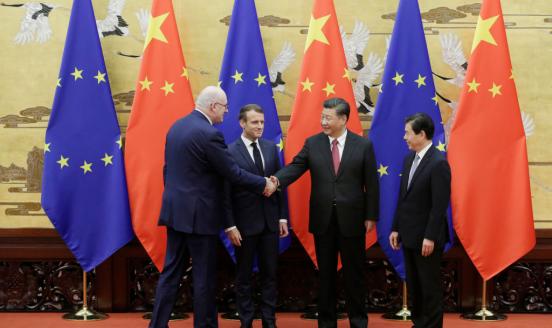China has a grand carbon neutrality target but where is the plan?
China’s new long-term targets, to reach peak emissions before 2030 and achieve carbon neutrality by 2060, are yet to be matched with a consistent shor

As the world’s largest greenhouse-gas emitter, China will make or break the global quest for climate neutrality by the middle of the century – the only way to limit the global average temperature increase to 1.5°C. Consequently, President Xi’s announcement in September 2020 of China’s new objective to peak CO2 emissions before 2030 and achieve carbon neutrality by 2060 was broadly welcomed. But President Xi offered no detail on how China could turn this vision into reality, and an examination of China’s current plans shows clearly the goal will not be achieved without major changes.
Following Xi’s announcement of the goals at the United Nations General Assembly, some details of how China might approach its targets were provided at the December 2020 Climate Ambition Summit. Here, Xi outlined preliminary elements of the new Nationally Determined Contribution that China is due to submit – like all other Paris Agreement signatories – ahead of COP26 in late 2021. Xi stated that China would aim by 2030 to cut carbon intensity per unit of GDP by more than 65% from 2005 levels (compared to the existing target of 60%-65% by 2030), and would increase the share of non-fossil fuels in energy consumption to 25% by 2030 (compared to the existing target of 20%).
As a continuation of the progress already being made by China, rather than an acceleration, these preliminary targets raised doubts about the feasibility of China peaking its emissions before 2030 and securing carbon neutrality by 2060. China’s continued investments in coal, the primary component of the county’s energy mix, have reinforced those doubts (Figure 2).
Instead of cutting its reliance on coal, China put 38 gigawatts (GW) of new coal-fired power capacity into operation in 2020, equal to the entire coal-fired power generation capacity currently installed in Germany. While one could argue that the pandemic made 2020 a difficult year for China to focus on climate, it remains to be seen when and how China will reveal how it intends to peak emissions by 2030 and achieve carbon neutrality by 2060.
The most obvious place to look for such information is China’s 14th Five Year Plan (FYP), which was announced at the National People’s Congress in March 2021. Five Year Plans are the main guiding force behind policy in China at all levels of government. Unfortunately, on climate measures, the 14th FYP falls short. It essentially outlines a continuation of existing trends, rather than an acceleration of climate action. Strongly focused on the development of the manufacturing sector (notably through strict targets on state-led innovation), the plan mentions neither a coal cap, nor an emissions cap (Table 1).
The 14th FYP simply commits to reducing the carbon and energy intensity of China’s GDP growth. Current estimates are that China’s emissions will continue to rise every year, at a rate of 1% to 1.7% until 2025. It should also be noted that the 14th FYP makes several references to the development of coal, emphasising its “clean and efficient utilisation”. This is consistent with the broader structure of the plan, which is strongly oriented towards ensuring China’s self-sufficiency in the context of an increasingly hostile external environment and, in particular, US-China strategic competition. In other words, the 14th FYP does not include a coal-consumption reduction target, nor a clear target for emissions to peak by 2025. Interestingly, the plan also makes no reference to the target of 1,200 GW of solar and wind installed power capacity by 2030, mentioned by President Xi in December 2020.
The lack of specific targets for the 2020-2025 period in the 14th FYP is worrisome, but does not mean President’s XI‘s commitment made at the UN is unachievable. It could still be achieved with much more stringent measures to cut emissions between 2025 and 2030, or with more stringent measures within the 14th FYP at central and local level, even if not imposed in the FYP. However, China’s recent economic history shows local government pushing for higher rather than lower growth, hampering progress in cutting carbon emissions.
More detailed measures on energy, renewable energy, coal and electricity from the Ministry of Ecology and Environment are expected in late 2021/early 2022. It might be within these measures that we finally see a ‘coal cap’ for 2021-2025. As if this were not enough, both Chinese and international climate modelling studies state that China’s emissions should peak by 2025 at the latest for China to reach carbon neutrality by 2050 (see for example a December 2020 study coordinated by the Energy Foundation China and the University of Maryland, which highlighted the dangers of locking-in high-emission assets and the need for rapid action). If China’s emissions do not peak quickly, achieving carbon neutrality by 2060 will be challenging.
Recommended citation:
García-Herrero, A. and S. Tagliapietra (2021) ‘China’s grand carbon neutrality target does not convince’, Bruegel Blog, 14 April



